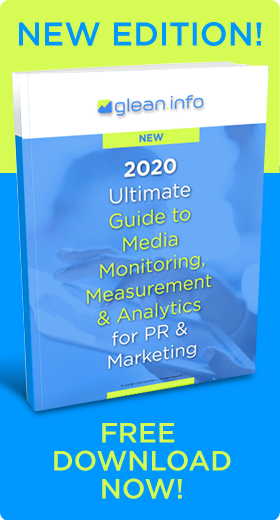
Calculating social media ROI is extremely difficult. Photo credit: Alan Cleaver
Measuring the ROI of social media remains a predicament for many marketers.
Only 37 percent of marketers surveyed last year said they were able to measure social media ROI, although 97 percent are using some form of social media marketing. How to measure social ROI was one of the top questions of marketers. Even 78 percent of large marketers said they had trouble measuring ROI.
Building brand awareness is a priority for many social media marketers. So why not apply traditional brand measuring techniques to social media? That’s what Anthony Long, head of SEO for Webs, asks. Corporations have been trying to measure the impact of traditional branding on ROI and may have some answers.
Long, who leads the organic search strategy and execution for both Webs and Pagemodo, explains how to calculate social media ROI based on traditional brand measures.
The Traditional ROI Formula
The traditional definition of ROI is Gain -Costs/Costs x 100. Although company finance executives often want to see a direct impact on profits, social media has both direct and indirect benefits. Gain can either show social media’s direct or indirect impact.
Exposure, a direct impact, can be measured by social media monitoring services that report and measure mentions of a brand. Organizations can reach an estimated value of exposure (EVE) by comparing the mentions to the cost of purchasing the same number of impressions on the network. Because the impressions are earned, brands save advertising costs.
To calculate EVE, find how much it costs to purchase the equivalent number of impressions. If your marketing efforts obtained 100,000 impressions that would cost $1.50 per thousand, then your EVE equals $150. Examining your web analytics can help determine gains from consumer actions like registrations or white paper downloads.
The other component needed to estimate ROI is cost of social media marketing. That includes everything needed to produce and promote content, including labor, training, and overhead.
Plug Numbers into the Equation
Once you have the numbers, the next step is to enter them into the formula. Suppose the cost of creating and placing a piece of content was $100 and that content reached 100,000 impressions that would have cost $1.50 per thousand. The effective cost per thousand, or eCPM, equals $1.50. The ROI can be computed as:
$150-$100/$100 x 100 = 50 percent. That’s a 50 percent return on your social media investment.
But you’re not done. You’ll need to continue to monitor your marketing efforts, calculating the formula, and adjusting strategies as needed.
Problems with the Estimated Value of Exposure Metric
While seemingly solid in theory, estimated value of impressions to calculate social media ROI has at least four serious shortcomings. First, it’s difficult (and usually impossible) to obtain valid data on the number of impressions in earned media. Few if any websites reveal the number of viewers of a page of editorial text.
Second, the “card rate” for the cost of advertisements is often far higher than the actual rates. Getting the actual rates for a calculation is difficult at best and the media sites reveal ad impressions only to advertisers.
Third, uncovering the data for impressions and advertising rates for each site that contains an earned media mention – if possible at all — requires a major investment of time and resources (which few marketing departments are willing to make).
Finally, the measured mentions would have to be positive and contain brand messages in order to be calculated as the equivalent of an advertisement. It should also be noted that there are no controlled studies that demonstrate any equivalency between an earned media mention and an advertisement. That’s the key reason that the major public relations associations recommend against using any measures of advertising value equivalency.
Now, you may understand why marketers are befuddled by methods to calculate social media ROI.
Don’t Expect Direct ROI from Branding
Kevan Lee at Buffer takes a different viewpoint. Buffer has given up on focusing on social media ROI. “Social media, first and foremost, is branding—and it is increasingly difficult to measure branding as a direct, one-to-one conversion,” he stresses. “In many ways, you can no longer expect direct ROI from content marketing or branding.”
Lee cites a simple graphic from Tom Tunguz to explain his reasoning. Direct response provides the simplest, shortest conversions, but conversion formulas become more complicated under content marketing and branding.

Image courtesy of Tomasz Tunguz
Larger companies may have the volumes to accurately compute branding ROI, but Buffer believes the scale of time, effectiveness and conversion doesn’t line up with its more limited resources.
Instead of focusing on ROI, it’s concentrating on building its email list and increasing its website traffic.
Bottom Line: Calculating social media ROI is one of the most challenging operations for marketers. Most of the proposed formulas have serious shortcomings. Better to focus on reach and branding impact than on ROI.
How does your firm measure social media success? Please comment below.
William J. Comcowich founded and served as CEO of CyberAlert LLC, the predecessor of Glean.info. He is currently serving as Interim CEO and member of the Board of Directors. Glean.info provides customized media monitoring, media measurement and analytics solutions across all types of traditional and social media.





You make some interesting points about the measurement challenges. Our small business has been growing well, and I’m trying to decide how much time and money should be spent on social media. I’m pretty new to twitter and Facebook, so I like reading from experts. Branding focus makes sense.